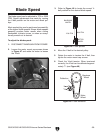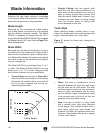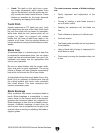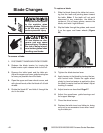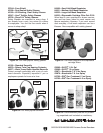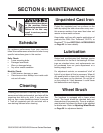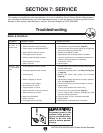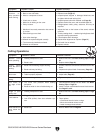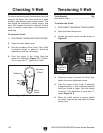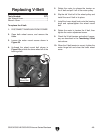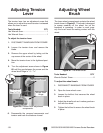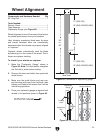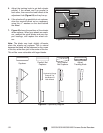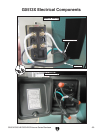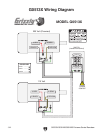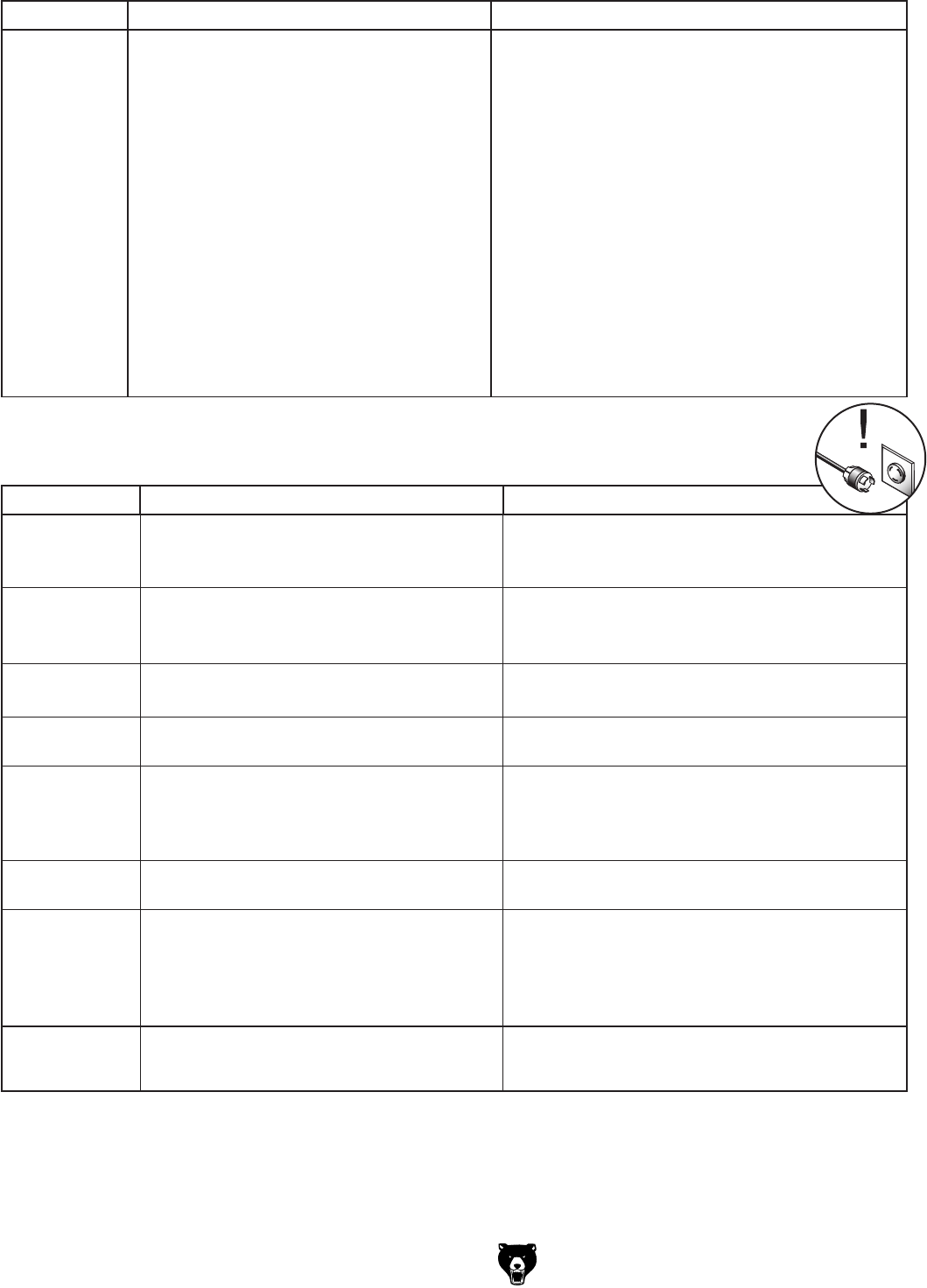
G0513X/G0514X/G0514X3 Extreme Series Bandsaw
-47-
Symptom Possible Cause Possible Solution
Machine has
vibration or
noisy operation
when running.
1. Blade weld hits guides or teeth are broken.
2. Bent or worn out blade.
3. Motor or component is loose.
4. V-belt worn or loose.
5. Motor fan is rubbing on fan cover.
6. Pulley is loose.
7. Machine is incorrectly mounted or sits uneven
-
ly on floor.
8. Motor bearings are at fault.
9. Worn arbor bearings.
10. Wheels not coplanar/aligned correctly.
11. Tires incorrectly installed on wheels.
12. Wheels out of balance.
1. Replace blade (
Page 42).
2. Replace blade (
Page 42).
3. Inspect/replace stripped or damaged bolts/nuts, and
re-tighten with thread locking fluid.
4. Inspect/replace belts with matched set (
Page 49).
5. Replace dented fan cover and loose/damaged fan.
6. Realign/replace shaft, pulley, setscrew, and key as
required.
7. Adjust the feet on the bottom of the stand; relocate
machine.
8. Test by rotating shaft — rotational grinding/loose shaft
requires bearing replacement.
9. Check/replace arbor bearings.
10. Adjust wheel alignment to coplaner (
Page 51).
11. Re-install tires on wheels.
12. Replace wheels.
Symptom Possible Cause Possible Solution
Machine slows
when operating.
1. Feeding workpiece too fast.
2. Blade is dull.
1. Reduce feed rate. See Basic Cutting Tips on Page
32.
2. Replace blade (
Page 42).
Ticking sound
when the saw is
running.
1. Blade weld contacting support bearing.
2. Blade weld may be failing.
1. Use file or stone to smooth and round the back of the
blade.
2. Inspect and replace blade if necessary (
Page 42).
Blade contacting
table insert.
1. Excessive side pressure when cutting.
2. Table improperly adjusted.
1. Reduce side pressure.
2. Adjust table (
Page 30).
Vibration when
cutting.
1. Loose or damaged blade. 1. Tighten or replace blade. See
Page 27 or 42.
Burn marks on
the edge of the
cut.
1. Too much side pressure when feeding
workpiece.
2. Blade too wide for size of radius being cut.
1. Feed workpiece straight into the blade. See
Basic
Cutting Tips on
Page 32.
2. Install a smaller width blade/increase blade tension.
See Page 27 or 42.
Rough or poor
quality cuts.
1. Feeding workpiece too fast. 1. Reduce feed rate. See Basic Cutting Tips on
Page
32.
Sawdust buildup
inside cabinet.
1. Clogged dust port.
2. Low CFM (airflow) from dust collection sys
-
tem.
1. Clean out dust port.
2. Three options:
—Check dust lines for leaks or clogs.
—Move dust collector closer to saw.
—Install a stronger dust collector.
Blade wanders or
won't follow line
of cut.
1. Blade lead. 1. Refer to Blade Lead on
Page 34.
Cutting Operations



